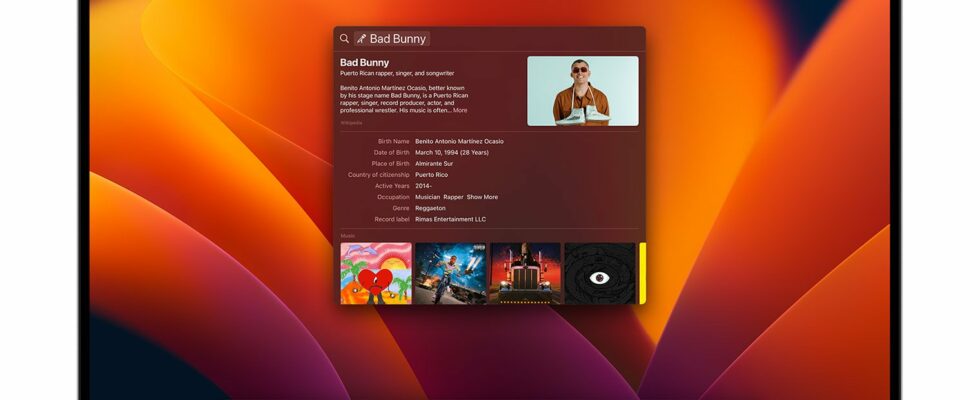Apple is currently finalizing the integration of generative artificial intelligence into at least two of its services: Xcode and Spotlight. The first is a programming tool dedicated to developers, while the second is used to find files on Mac, iPhone and iPad.
Much less direct than those of Microsoft or Google, Apple’s approach to generative AI may soon start to be more apparent. We actually learn from Bloombergthat the firm would have extended internal testing of new artificial intelligence features for Xcode, its programming tool dedicated to developers.
At the same time, Apple would also be actively working on adding functions based on generative AI to some of its software and tools, this time intended for the general public. The firm would therefore be working, for example, on a chatbot integrated into its Spotlight search utility, but also on an automatic slideshow system in Keynote (its competing application with PowerPoint), or even on the automatic generation of playlists in Apple Music.
We also know that iOS 18 will also be equipped with a good dose of AI, if only to compete with the Galaxy AI platform introduced by Samsung in January.
AI at Apple? Don’t worry, it’s coming…
In the case of Spotlight, iOS and macOS users could in the future query the search tool through natural language queries, exactly as they would with ChatGPT. Apple’s utility could also gain flexibility in its responses, offer more precise results or even exploit features offered in certain installed applications itself.
As pointed out The Verge, Apple’s activity in recent months on the subject of AI has mainly focused on the launch of new tools intended for developers. We think for example of MLX (a framework machine learning accessible in open-source), but also to MGIE (an AI model for text-image editing) or even to Keyframer (an AI animator).
For Xcode, Apple would this time work on the integration of a large language model making it possible to predict and complete strings of code, or even potentially write code autonomously to test applications, for example. The tool would then take on a new scope, and we could hear a lot about it during the next WWDC.
